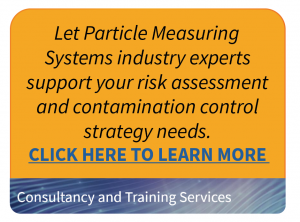How to define a Contamination Control Strategy (CCS)
In Part 1 of this blog series we learned how contamination is defined and what it means to control potential contamination. In Part 2 we discussed how the EU GMP Annex 1 2020 Draft Guidance regards CCS. In Part 3 we will talk about how to define the potential root causes of contamination.
How to define the potential root causes of contamination in 3 steps:
Together, the 3 steps below define the potential root causes of contamination with the result being a comprehensive understanding of the process’ contamination vulnerabilities.
Process Mapping – Identify the risks of viable and non viable contamination
Qualitative Approach
HAACP (Hazard Analysis & Critical Control Points) – Identify the CCP including associated risk.
Note: repeat Steps 1 and 2 for all root causes identified!
Quantitative Approach
Risk Evaluation FMEA (Failure Mode & Effects Analysis) – Define the risks by their criticality to the process, and quantify the risk associated with the CCP, therefore with the specific process phase.
Want to read more? Jump to other released PMS posts in this series:
- Part 1 of 4: How is Contamination Defined?
- Part 2 of 4: What do the guidelines say about CCS?
- Part 3 of 4: How to define the potential root causes of contamination. (You are here!)
- Part 4 of 4: Design a cleanroom according to Sterility Assurance Principles
- Extra: Contamination Control Strategy FAQ’s
Learn more… Get the full paper here.
Learn how Particle Measuring Systems‘ Cleanroom Contamination Control Advisory Services Team can help you identify problems and suggest solutions to preserve the high quality of your products and processes.

